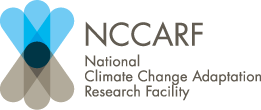You are here
CoastAdapt for Natural Resource Managers (NRMs)
The recent Australian Government investment to support adaptation planning by NRM groups in Australia and to deliver climate change data to NRM clusters has been very helpful for NRM planners.
CoastAdapt provides information and guidance that can help build on existing information, and support NRM Planners and their stakeholders to plan for and implement adaptation in the coastal zone.
First of all, here are a few things you may be looking for, and links to where there is information in CoastAdapt.
I want to know more about the risks of climate change and sea-level rise along my part of the coast
- Visit Sea Level Rise and You for information on future sea level rise and inundation for your local area, and how to use these graphs, tables and maps
- Learn about how Australia’s climate will change in the future
- Understand more about how climate change and sea level rise are expected to impact the coast
- Understand more about impacts on different sectors
I want to know more about extreme weather (e.g. floods, cyclones etc.) and sea-level rise, and how and why extreme events might change in the future
- More information about extreme weather events is available at ‘Practical Knowledge for Adaptation’
- The causes of climate change and sea level rise are discussed here
- You can find out more about the extreme storms that affect Australia and their impacts
I want to identify the local risks of climate change and sea-level rise and learn how they are relevant to me
- As a first step, you need to identify your risk. CoastAdapt has two tools to help you do this. The first, Shoreline Explorer, looks at present-day vulnerability and erodibility of the coast. The second, Sea-level Rise and You, looks at future sea-level rise and inundation
- You can then do a first-pass risk assessment to see if you need to take further action.
I understand my risks and I am ready to start my adaptation planning
- If you want to undertake a complete risk assessment and management process, CoastAdapt provides a full adaptation decision support framework – C-CADS. This walks you through from identifying the challenges to monitoring and evaluating your adaptation projects.
- Taking on a full risk assessment might be a bit daunting, but it’s worth reading the first step of C-CADS – Identify the Challenges – as an introduction to adaptation planning.
- If you are interested in local government adaptation planning, the best place to start is here.
- Adaptation planning often means dealing with uncertainty and trade-offs that affect your decisions. Understanding the idea of a pathways approach may help you think about some strategies for dealing with these challenges.
- If you intend to use consultants to help with your adaptation planning, CoastAdapt has guidance to help ensure you get the best outcome from their services.
- Engaging with your stakeholders throughout the adaptation planning process is essential. CoastAdapt provides advice on how to go about engagement and consultation.
What tools and approaches are available in CoastAdapt to support adaptation action?
- The pathways approach seeks to reduce the uncertainties around the timing of climate change, which can be a barrier to adaptation. The approach asks you to identify events for your sector or community that will trigger an adaptation response. For example, once a causeway is flooded more than ten times a year, it will be raised or rerouted. By identifying a series of triggers, an adaptation pathway is mapped out based on events rather than timing. https://coastadapt.com.au/pathways-approach
- CoastAdapt provides a full decision support framework (C-CADS) to take you through the complete cycle of adaptation planning, project implementation and project monitoring and evaluation.
- All the adaptation tools available in CoastAdapt are listed on the Tools page
I want to know more about the climate models used to estimate future changes in climate and sea-level rise, and how these models work
- Begin by understanding how scenarios of future climate change are constructed
- Then, download a simple infographic that explains the greenhouse emissions pathways used by climate models
- How can the information from climate models be used to explore future risks to our coasts? CoastAdapt provides information on sea-level rise and inundation
- Finally, CoastAdapt helps you to understand how to communicate future climate risks to a broader audience, such as your community
CoastAdapt contains information that is directly relevant to NRMs.
If you interested in the impacts of climate change in the coastal zone on sectors relevant to NRM, there is information in CoastAdapt:
- Climate change impacts on coastal ecosystems
- Climate change impacts on coastal fisheries and aquaculture
- Climate change impacts on coastal agriculture
- Climate change impacts on coastal water supply and waste water management
CoastAdapt contains in-depth information relevant to NRMs in its Information Manual on Coastal Ecosystems.
CoastAdapt identifies ecosystem-related adaptation options.
Every CoastAdapt user is different. We have prepared eight profiles that may help you find what you need:




